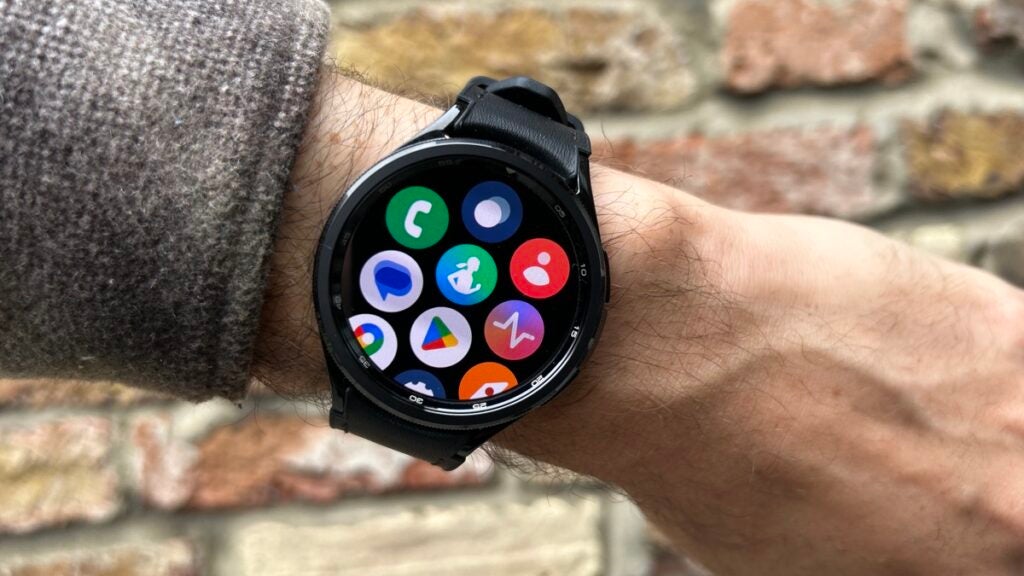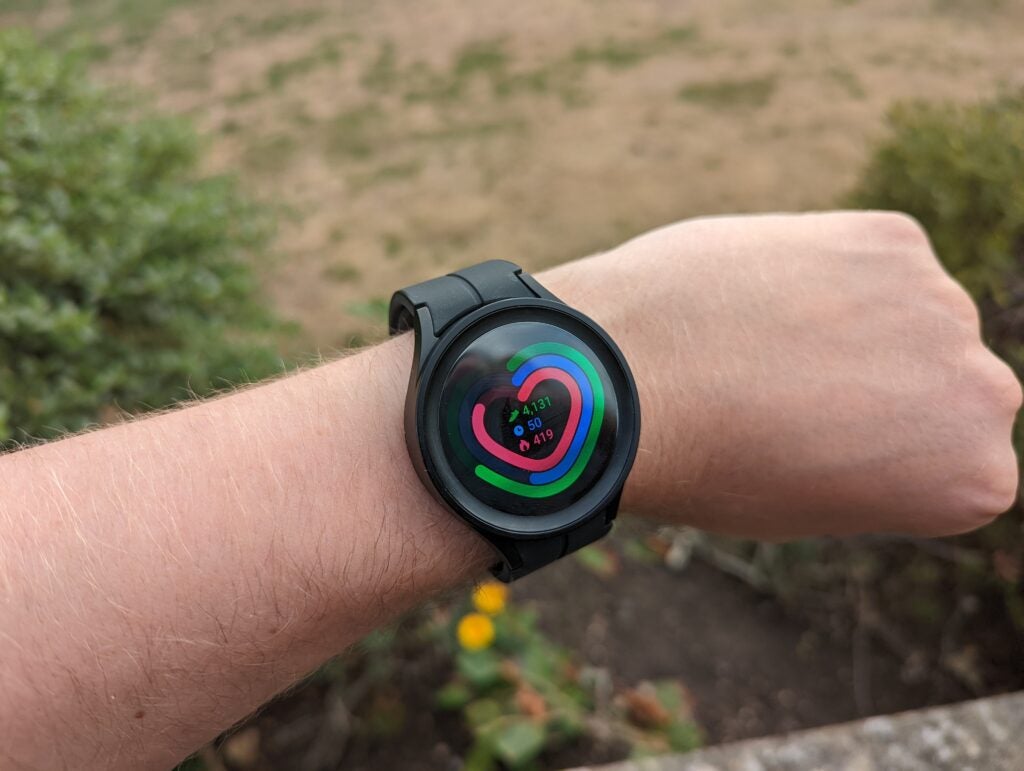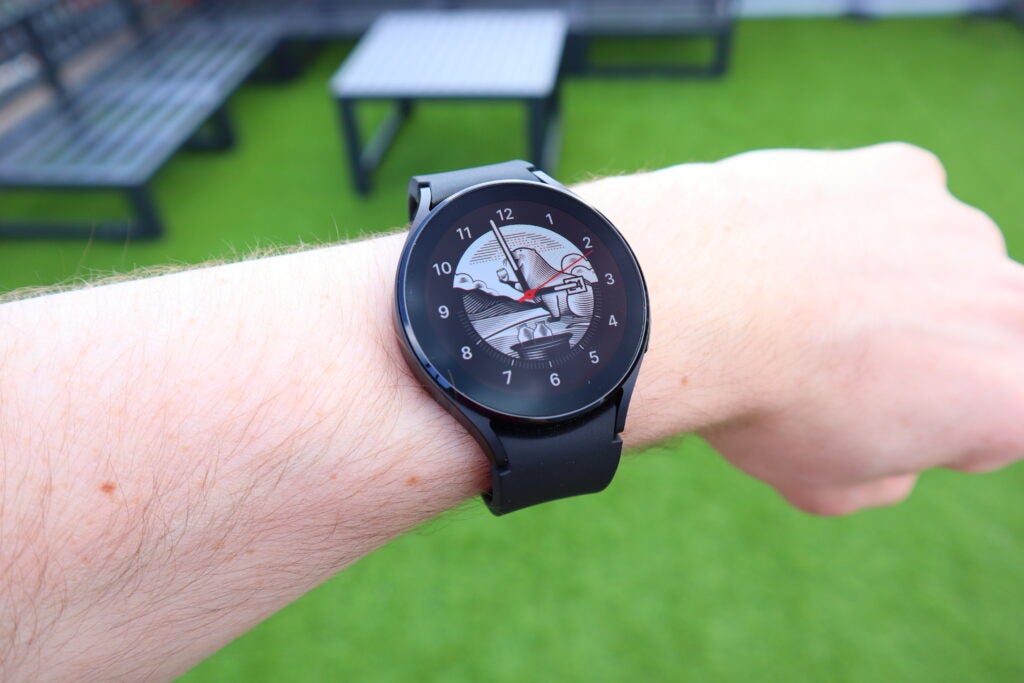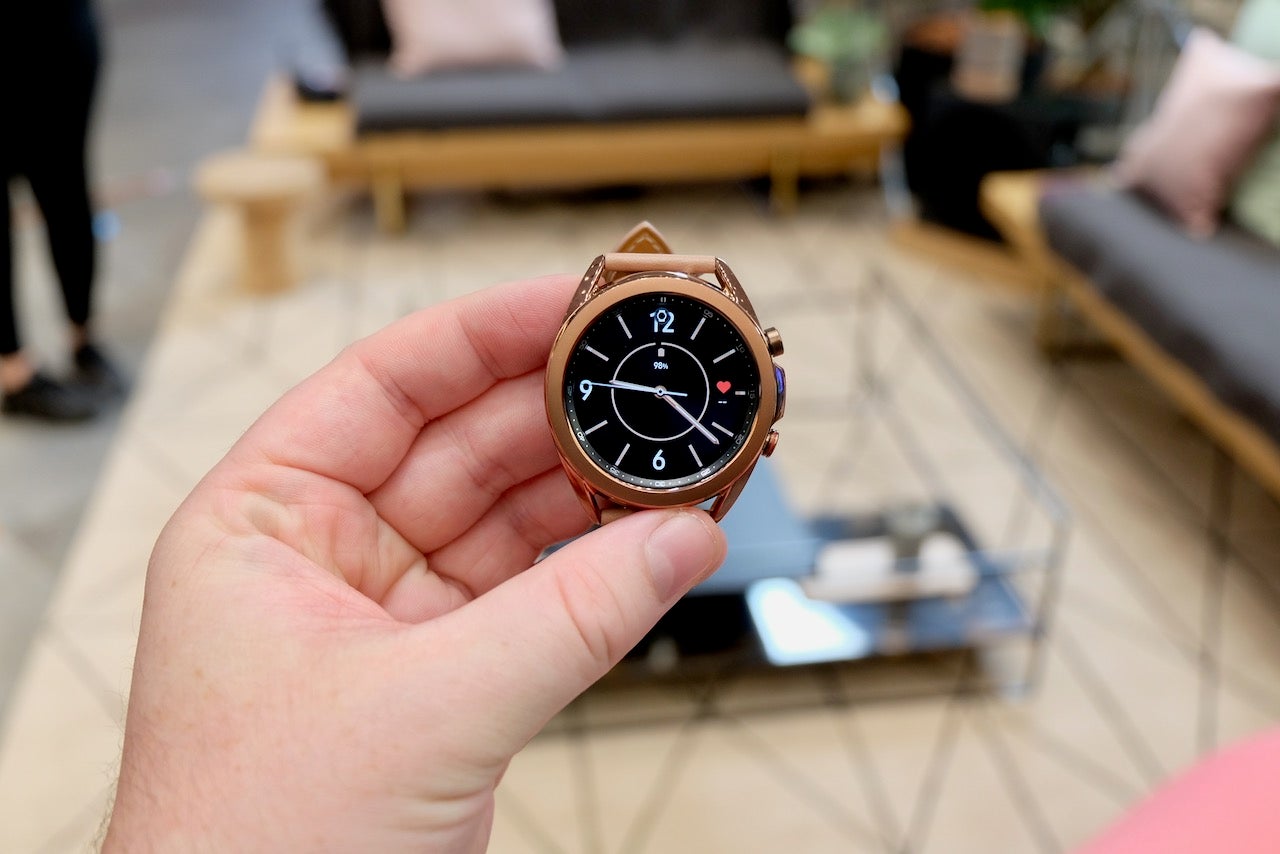
It doesn’t matter if you use a Samsung device or another Android phone, Galaxy Watches can make for a great smartwatch pairing and these are the best of them.
In fact, it’s Samsung’s Galaxy Watch line that has come closer to Apple’s lofty wearable heights than any other manufacturer in recent times, boasting a high level of polish not only in terms of hardware but software too. That’s great to know, but you’ve still got quite a few models of Galaxy Watch to choose from, so the real question is, which is best for your needs?
Considering Samsung has been producing smartwatches since 2013, it’s safe to say it has a lot of experience in the wearable arena. The most recent Galaxy Watch 7 and Galaxy Watch Ultra represent the latest and greatest of Samsung’s wearable line, both of which feature as part of our hand-picked selection below.
There is a catch, however; while other WearOS-powered smartwatches from the likes of TicWatch and Fossil work seamlessly across all Android devices, Samsung’s are designed to work best with its Galaxy phones. While that’s fine for Samsung users, it means other Android users won’t get access to the complete Galaxy Watch experience – a key point worth considering.
Our reviewers have tested each of these wearables for at least a week with an accompanying Samsung smartphone, testing key performance indicators such as app support, features, battery life and general usability. We take them on runs, walks, and take note of their performance for day-to-day use too, gaining a proper understanding of how well the device works in real-world conditions.
As a side note, you can also check out our round-ups of the best smartwatch, best cheap smartwatch, best running watch and best Wear OS watch if you’re after a wearable that doesn’t have the Samsung brand attached to it.
Best Samsung Watch at a glance
How we test
Every smartwatch we test is used by the reviewer for at least a week, or longer if the battery life lasts beyond that point or we need more time to trial its features.
During testing, we will check it for key metrics including app support, usability and battery life. If the device offers fitness, location or health tracking features we will also test these for accuracy and reliability.
For distance tracking we record how accurately the device recorded runs on tracks we know the length of. We also record how much battery is lost using things like in-built or connected GPS per hour. To check heart rate accuracy we compare the results recorded on the wearable to a dedicated HRM strap.
After recording the data we then pair it with our general experience using the wearable day-to-day, letting you know if it’s comfortable to wear or if we encountered unexpected bugs during use over the review period.

Samsung Galaxy Watch 7
Best Galaxy Watch
Pros
- Great overall smartwatch experience
- Software is nice and slick
- Useful addition of new Energy Scores
Cons
- The battery life is nothing special
- New AI-powered health insights a mixed bag
- Sports tracking still not spotless
If you ever needed proof that Samsung has now fully entered its age of iterative wearable updates then look no further than the Galaxy Watch 7. Don’t get us wrong, the Watch 7 is still a great wearable device and currently the top pick that we recommend to most users in the market for a future-proof Wear OS device, but if you already have the Galaxy Watch 6 then you may want to wait another year or two before making an upgrade.
For everyone else, the Galaxy Watch 7 is easily the most competent wearable that Samsung has put out yet.
For starters, as part of the company’s push to offer up more AI capabilities, Galaxy AI has been adapted here to offer a more substantial fitness tracking experience. This time around, Galaxy AI is able to analyse your workout data and provide personalised recommendations in return.
AI can also be used for handy, on-the-go features like more intelligent suggested replies to messages, and summaries for any speech to text recordings.
The core fitness tracking experience remains much the same to how it was on the Galaxy Watch 6 but this time around there’s a serious boost to location tracking. The Watch 7 boasts dual-band GPS for a stronger connection that, in turn, provides more accurate results that you can then pour over after your outdoor workout.
To get this feature without having to fork out for the far more expensive Galaxy Watch Ultra is a blessing, although true outdoor adventurers may want to give that device a look for the enhanced durability it provides. For everyone else, the Galaxy Watch 7 gives you almost everything you could want from a smartwatch.
Reviewer: Michael Sawh
Full review: Samsung Galaxy Watch 7 review

Samsung Galaxy Watch 6 Classic
Most stylish Galaxy Watch
Pros
- Great design
- Love the rotating bezel
- Accurate fitness data
Cons
- Battery life still too short
- Lots of fiddly settings
- So many terms and conditions
After a short hiatus from the Watch 5 series, Samsung decided to revisit its ‘Classic’ timepieces with the new Galaxy Watch 6 Classic. With a few years’ difference between the wearable and its predecessor (the Galaxy Watch 4 Classic), Samsung’s created a worthy upgrade here that’s well worth checking out if your old Galaxy Watch is starting to show its age.
As its name implies, the 6 Classic has a more distinguished style that separates it from the more sport oriented look of the standard Galaxy Watch 6. This includes the use of a tougher stainless steel chassis as well as a new hybrid eco-leather band that’s best paired with a suit.
The Galaxy Watch 6 Classic also boasts the physical rotating bezel that helped to put the Galaxy Watch line on the map many years ago, letting you scroll through menus and apps just twisting the bezel like a dial. It works brilliantly and is definitely a step up from the digital rotating bezel on the Watch 6.
Beyond all of that however, there isn’t much else to lure users to the Galaxy Watch 6 Classic, which is a shame given that it also brings a significant price bump over the entry level Watch 6 so if you’re not too fussed with the professional aesthetic here, then you might be better off saving your money.
The other specs are exactly the same as the Watch 6, boasting Wear OS 4 and the new Exynos W930 chipset, although this isn’t a bad thing per se. The watch works well in everyday use and while the battery life could definitely be improved, there’s a lot to like here.
Reviewer: James Stables
Full review: Samsung Galaxy Watch 6 Classic review

Samsung Galaxy Watch 5 Pro
Best Samsung Watch for battery life
Pros
- Solid fitness tracking services
- Rugged, sports-ready design
- Wonderfully bright display
Cons
- Route planning process feels clunky
- Battery life doesn’t match rival fitness trackers
If it’s loads of battery life you want in a Galaxy Watch, the Samsung Galaxy Watch 5 Pro offers it in spades.
It comes packed with a 590mAh cell, which is large for a smartwatch of this ilk and offered around two days of regular use before needing to be charged. In addition, its charge times are pretty decent, with it taking an hour and 22 minutes to go from dead to full, and from dead to 38% in 15 minutes – handy for when you need a quick boost and you’re about to head out.
The core feature set is the same as the standard Galaxy Watch 5, but the Pro model brings with it some noteworthy additions that serious fitness fanatics will appreciate. Particularly, the addition of GPX file support, as usually found on hardened fitness trackers from Polar and Garmin, will be useful for hikers and cyclists as it allows you to plot a root in an app like Strava and load it onto the watch. Once there, the Pro offers turn by turn navigation to ensure you follow the route exactly. Besides this, there’s the same handy BioActive sensor for health reporting, as well as its sleep-tracking animals and relatively accurate GPS. Even on this Pro model though, the new temperature sensor remains largely useless almost a year after its initial launch.
The Galaxy Watch 5 Pro’s design is largely the same as the standard Watch 5, but it offers a more rugged and hard-wearing appearance involving a raised edge display with a titanium bezel for protection as well as the same durable Sapphire crystal as the standard Watch 5. Like its sibling, the Pro is both IP68 and MIL-STD-810H certified, which is a testament to the watch’s durability.
The controls on the Watch 5 Pro feature a pleasing level of tactility and proved to be a welcome addition to such a fitness-focused device for a quick pause of a workout, and while there isn’t a rotating bezel as with other Samsung watches of old, the digital scroll is a somewhat worthy successor. The Watch 5 Pro opts to use a Super AMOLED display which is vibrant and one of the brightest we’ve seen on a wearable. Furthermore, all icons were readable and easy to see, thanks to the high brightness and excellent contrast.
Reviewer: Alastair Stevenson
Full review: Samsung Galaxy Watch 5 Pro review

Samsung Galaxy Watch 4
Best affordable Galaxy Watch
Pros
- Wear OS at its finest
- The digital bezel works like a charm
- Flat, minimalist design is stunning
- Gorgeous collection of original watch faces
Cons
- Still a lot of features yet to come
- Doesn’t work with iPhone
- Bixby is a mess
The slightly older Samsung Galaxy Watch 4 isn’t all too much of a downgrade admittedly from the fifth and sixth-gen options above, and can now be had for lower prices as a result of the new models. Here’s why it’s our favourite affordable Galaxy Watch.
It offers a minimalistic design, like the Galaxy Watch Actives of old, which looks great, and also feels rather comfortable too, with a lightweight housing that clocks in at just 26g, without the strap of course. That strap itself is comprised of smooth silicon that’s easy on the wrist when you’re working out.
Perhaps the headline difference between the Watch 4 and its predecessors is the fact it runs on an Google’s Wear OS 3 – this makes a change to older Galaxy Watches than ran Samsung’s own Tizen OS.
This new UI offers a tiled interface which brings with it easy access to the most frequently used functions, as well as integration with key services such as Google Maps, Google Pay and YouTube Music which is, bizarrely, a first for WearOS watches.
Alongside the new OS, there are a host of functions for fitness tracking and health monitoring, chief among which is the new BioActive sensor which compiles multiple sensors into one unit, offering a good all-round option.
Its fitness tracking features during testing proved to be rather accurate, as was the case with the likes of heart rate and distance measurements, while the Google Fit and Samsung Health apps provided a wealth of data for even the most hardened of fitness fanatics to get stuck into.
Compared to its predecessor, the Watch 4 also offers an improved battery life with two days’ worth of use before you’ll need to charge it. This compares well against trackers and smartwatches from other manufacturers we’ve tested too, with it beating off the Apple Watch 7 by 30 hours.
Reviewer: Thomas Deehan
Full review: Samsung Galaxy Watch 4 Review

Samsung Galaxy Watch Ultra
Best premium Galaxy Watch
Pros
- Wear OS gets some design personality
- Strong GPS and HR accuracy
- Ultra-bright and clear display
- Comprehensive sleep tracking
Cons
- Navigation crying out for rotating bezel
- Inconsistent battery life
- Not a good fit for smaller wrists
- Exclusive features for Samsung phones
Even though the Galaxy Watch 5 Pro offers a more predictable battery life and the standard Galaxy Watch 6 provides the best features for most people, there’s no denying that for those who can afford it, only the Samsung Galaxy Watch Ultra can deliver a flagship level experience.
Designed as Samsung’s answer to the high-end Apple Watch Ultra 2, the Galaxy Watch Ultra is easily the most durable watch on this list. Made from military level, grade 4 titanium, the Watch Ultra is designed to withstand depths of up to 10 ATM (100 metres), making it more than ready to handle even the harshest of outdoor elements.
The design itself, which combines Samsung’s signature circular display with a more squared off chassis, might not be for everyone but as far as we’re concerned, it’s one of the few Wear OS watches that really stands out from the crowd.
Speaking of Wear OS, the Galaxy Watch Ultra is among the first wearable devices to boast having Wear OS 5 out of the box. Even though it’s got some way to go before catching up to watchOS completely, it’s still the best version of Google’s operating system yet, with great functionality and tons of third-party apps.
Where the Galaxy Watch Ultra really comes into its own is with outdoor workouts. Because it comes with dual-frequency GPS, the device is able to deliver incredibly accurate route tracking, and that same level of accuracy can be found in the results for heart rate tracking. In our tests, the Watch Ultra performed brilliantly alongside the best Garmin watches as well as dedicated chest-worn HRM straps.
As great as these facets are, there’s still work to be done in the Body Composition app, which can provide notably inconsistent results. There’s also no sign of a physically rotating bezel which would have been a huge boon for the Watch Ultra, but these are minor issues on what is otherwise an outstanding Samsung smartwatch.
Reviewer: Conor Allison
Full review: Samsung Galaxy Watch Ultra Review
We also considered…
FAQs
As you’ll see above, the Samsung Galaxy Watch 4 remains one of our top recommendations for the best Galaxy Watch despite its age. If you’re not too fussed with the new options or you want a more affordable choice, the Watch 4 is a great choice with its modern design and recent Wear OS updates.







